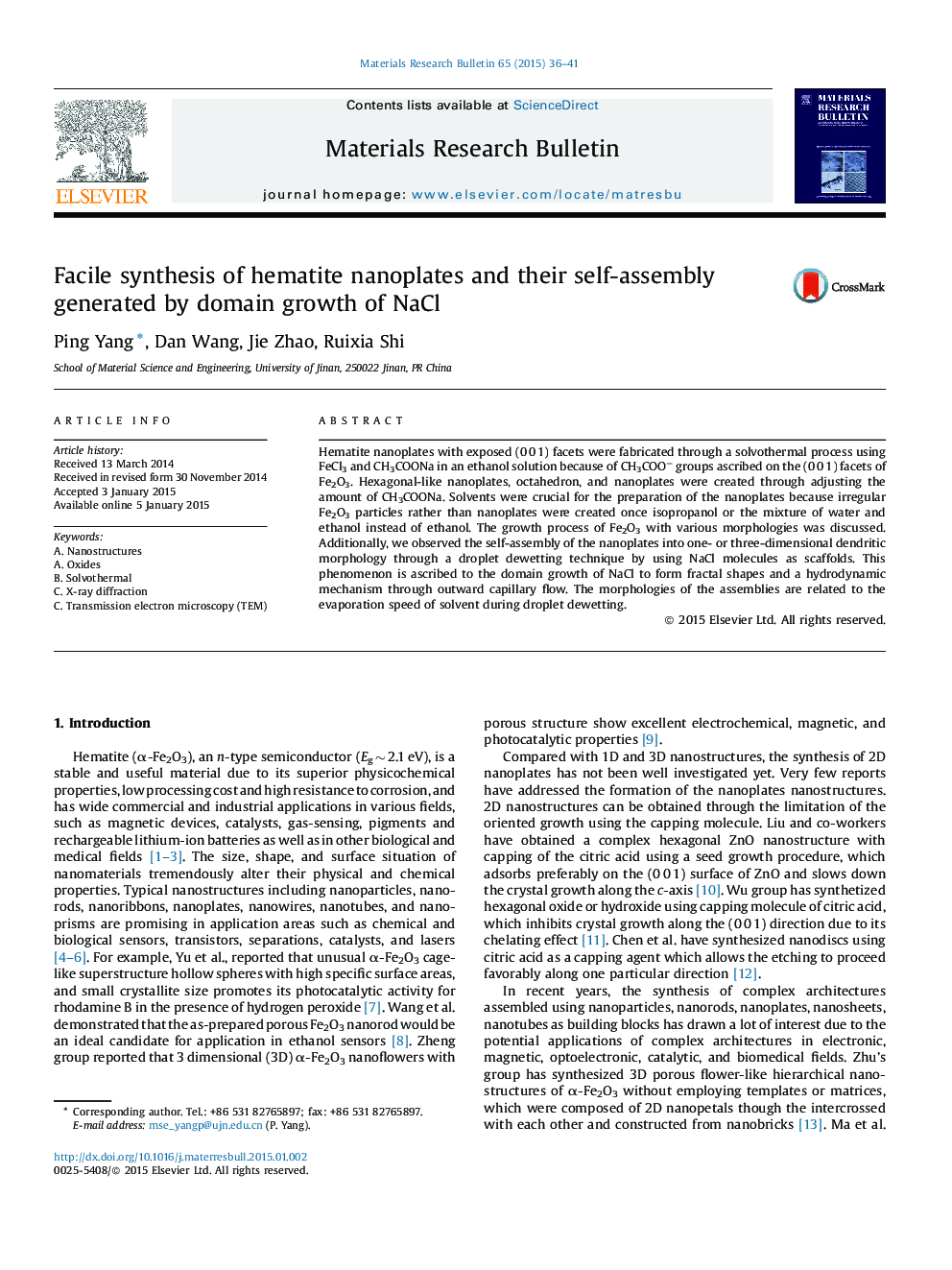| Article ID | Journal | Published Year | Pages | File Type |
|---|---|---|---|---|
| 1487668 | Materials Research Bulletin | 2015 | 6 Pages |
•Hematite nanoplates with exposed (0 0 1) facets were fabricated via a solvothermal process.•Other morphologies were created through adjusting the amount of CH3COONa.•The self-assembly of the nanoplates into one- or three-dimensional dendritic morphology.
Hematite nanoplates with exposed (0 0 1) facets were fabricated through a solvothermal process using FeCl3 and CH3COONa in an ethanol solution because of CH3COO− groups ascribed on the (0 0 1) facets of Fe2O3. Hexagonal-like nanoplates, octahedron, and nanoplates were created through adjusting the amount of CH3COONa. Solvents were crucial for the preparation of the nanoplates because irregular Fe2O3 particles rather than nanoplates were created once isopropanol or the mixture of water and ethanol instead of ethanol. The growth process of Fe2O3 with various morphologies was discussed. Additionally, we observed the self-assembly of the nanoplates into one- or three-dimensional dendritic morphology through a droplet dewetting technique by using NaCl molecules as scaffolds. This phenomenon is ascribed to the domain growth of NaCl to form fractal shapes and a hydrodynamic mechanism through outward capillary flow. The morphologies of the assemblies are related to the evaporation speed of solvent during droplet dewetting.
Graphical abstractHematite nanoplates with exposed (0 0 1) facets were fabricated through a solvothermal process using FeCl3 and CH3COONa in an ethanol solution because of CH3COO− groups ascribed on the (0 0 1) facets of Fe2O3. The self-assembly of the nanoplates into one- or three-dimensional dendritic morphology occurred through a droplet dewetting technique by using NaCl molecules as scaffolds.Figure optionsDownload full-size imageDownload as PowerPoint slide
